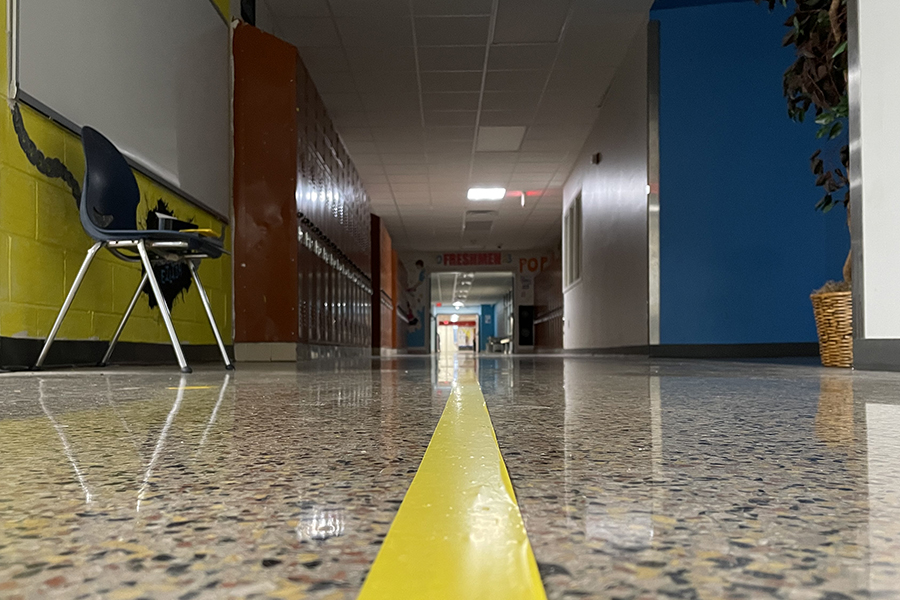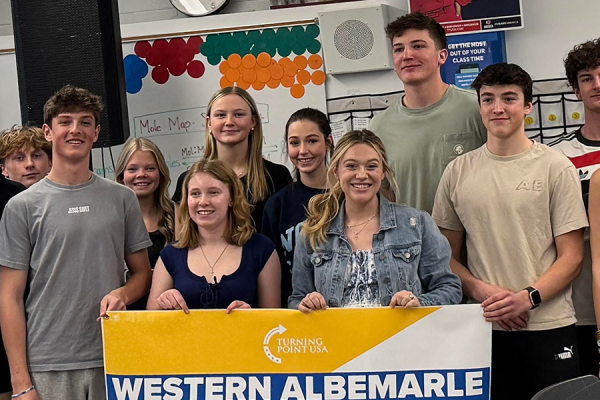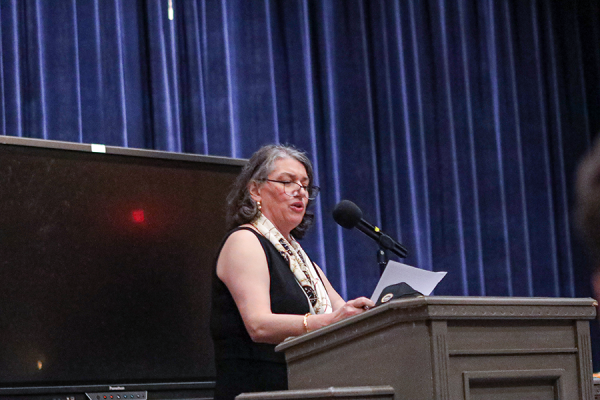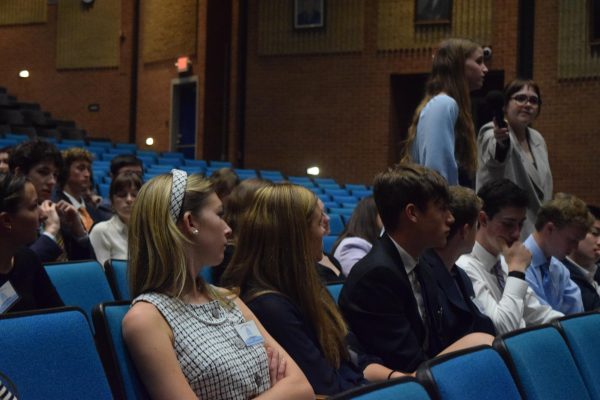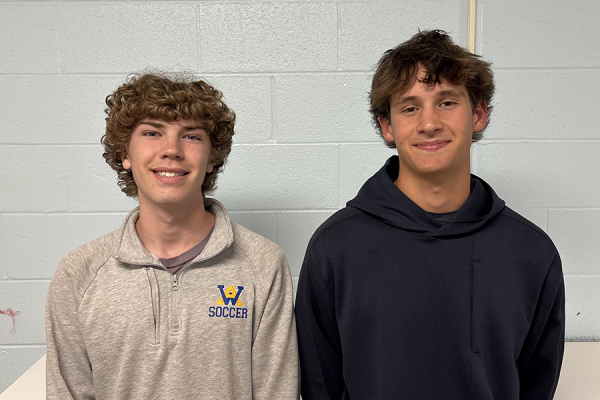County Schools to Enter Stage 4; In-person Learning Offered to All
In addition to vaccinations, the School Board has mandated several mitigation policies within schools.
March 5, 2021
Albemarle County high-schoolers will return to school on March 15th, per the School Board’s decision to progress to Stage 4 of the county’s reopening plan.
In accordance with Governor Ralph Northam’s statewide expectation, Albemarle County Public Schools will offer partial in-person instruction to all students by that date. Grades K-3, who now attend school two days per week, will progress to four days weekly. Grades 4-12 will learn in-person twice a week, ending a year-long stretch of solely virtual instruction. A virtual option remains for all students.
Despite the School Board’s decisive 6-1 vote, the decision was challenging. David Oberg, White Hall district representative, voted in favor of the shift to Stage 4. “Ultimately it’s what I think is best for our students,” Oberg said. “I think that the risk of having kids in school is outweighed by the risk of having our kids isolated.”
The Board’s decision delayed Superintendent Mathew Haas’ transition plan by two weeks to allow for preparations such as teacher vaccinations. “I decided that I wanted to wait until all of the teachers have… the option of the first vaccine dose,” Oberg said. “Not all of them are taking advantage of the vaccine; some of them haven’t had a chance to yet.”
However, it is unclear whether or not that will have happened by the opening of schools. The county has said they believe all who want the vaccine will have been offered at least the first dose by the end of March, however, at the time of publishing, only 675 teachers and employees of the county had received the second dose, out of 2,012. For optimal immunity, both doses of the vaccine must be administered. 3.4% of staff have indicated that they will refuse the vaccine. This estimation of vaccination by the end of March is an important distinction, since schools are opening on the 15th, and therefore some staff members may not have at least one vaccine available to them for two weeks after that date.
In addition to vaccinations, the School Board has mandated several mitigation policies within schools. With exceptions for eating, drinking, and physical exercise, all returning students must wear masks that cover both the nose and mouth. In situations in which students are unmasked, they must maintain a distance of six feet between themselves.
However, many teachers believe that such policies do not offer sufficient protection. Melissa Techman, a librarian at Western Albemarle High School (WAHS), objected to the masking exceptions. “The CDC guidelines about masking are not being addressed when we talk about high school students eating lunch for 30 minutes with no masks on in small rooms,” she said at the Board’s February 11th meeting.
Local coronavirus data was a key consideration for the School Board. Daily reported cases in Albemarle County and Charlottesville are currently higher than when the academic year began remotely in August. About 70 cases are reported daily in the city-county area, placing the community at a level of “substantial transmission” according to the CDC, the second highest transmission threshold.
However, Dr. Carlos Armengol, a local pediatrician and member of the Division’s COVID-19 task force, attributed the high numbers to outbreaks among University of Virginia students. “Of the cases that we are seeing in Charlottesville, Albemarle, and in the [Blue Ridge Health] District, the majority of them [are] in UVA students,” he reported at the School Board’s February 25th meeting.
Although all students have the option to return, in-person attendance will be neither geographically nor socioeconomically consistent. In a mid-December survey, 55% of responding county high-schoolers indicated that they will attend in-person instruction. However, at WAHS, a full 69% reported that they would. Meanwhile, though 61% of white students countywide will return to school, only 34% of Black students, 35% of Asian students, and 51% of Hispanic students are expected to return. There was a significant difference in attendance expectations within income groups as well. Financially unstable students will only return at a rate of 43%.
These discrepancies troubled Rivanna District representative Judy Le, who worried that students who remain virtual will lose access to vital services.“This plan reassigns 50 percent of our intervention teachers and 20 percent of our ESOL [English for Speakers of Other Languages] teachers,” Ms. Le said before casting her dissenting vote. “We’re compounding the inequities that have plagued us for generations.”
Disabled students constitute another group of special concern. Casey Mather, a senior at WAHS with a disability, stated that “without accommodations specifically for virtual learning, students with disabilities simply can’t thrive in this environment.” However, in-person instruction presents new challenges. Mather noted that many students with disabilities are at a higher risk for severe complications of the virus.
The decision of whether or not to return in person is a difficult one for many students. While all teachers but the few with medical exemptions will be required to return, students and families are left to decide for themselves.
Thomas Kallen, a senior at WAHS, chose to return to in-person learning. “I know that when we return to school, it’s not going to be the same,” Kallen noted. “Socializing isn’t going to be as easy, [and] it’s not going to happen as frequently.”
Jake Greenstein, a junior at WAHS, will be remaining entirely virtual. “My mom doesn’t really want me – or she doesn’t think it’s safe to go back yet. She wants the vaccine to be more effective to more people, and just to wait a little bit longer.”
Greenstein did concur with the larger decision by the School Board, however. “If people want to go back, they definitely should. I think it’s a good time, it’s just I’m not ready yet and my family isn’t ready.”
Dottie Akers, a WAHS 9th grade English teacher, expects new challenges to accompany Stage 4. “In the beginning, [hybrid teaching] is going to feel overwhelming and unsustainable, but then we’re going to get over the learning curve,” Akers said. “I think there are probably a lot of questions that we haven’t even thought to ask ourselves yet.”
Though the effects of the School Board’s decision remain to be seen, Mr. Oberg believes that all coronavirus policies will have a lasting impact on the Division’s students. “I think there are challenges that we’re going to face. I think it’s going to be tough for… I think some of the students are going to have a trust factor because they’ve been taught to be afraid. Right, be afraid of touching, be afraid of being too close to people, be afraid. I think that’s important because we want people to be cautious, but I wonder especially with our little kids if we haven’t taught them too well.”



